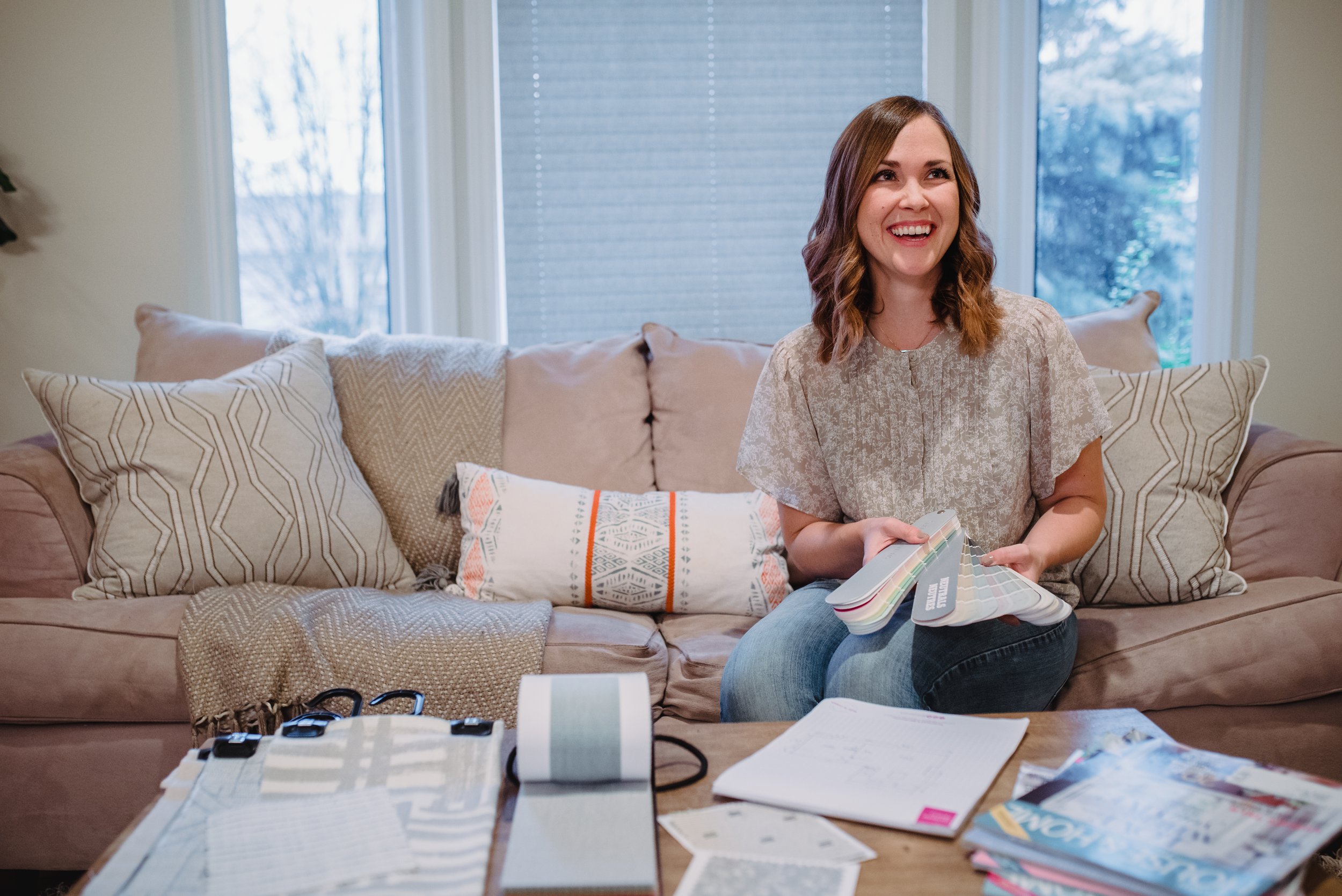What to Consider Before You Plan Your Home Renovation
Whether you’ve been dreaming about a home renovation for years or if it’s something that you are only just starting to think about, there are some early things to consider before you dive head first into the planning.
We’ve spoken to many homeowners over the years - who are all at different phases of considering their renovation plans - so we’ve learned a few things along the way that can help you navigate the early stages of planning with a bit more ease.
No matter if you’ll be hiring a renovation team to support your plans or if you’ll be tackling the project on your own, we’ve rounded up a few suggestions for you to think about to help you feel more prepared and more aligned with what you want to accomplish for your home.
Otis Interiors | Project Knapp
1) Create Your Wish List
The first thing to consider is to start building your wish list to help you map our what your biggest priorities are. Think about your non-negotiables and what would be nice to have but not a staple. Are you thinking of opening up/taking down walls? Adding more natural light to your home? Saving up for your dream kitchen? Giving your fireplace a brand new look? It can even be as specific as designing a space around a family heirloom.
After you build your list, take some time to prioritize them in order of most important onwards. Holding your priorities close will help you make easier decisions as you know what is important to you. It will also help you outline your goals to any contractors or trades you bring in for your project.
2) Think About What You Need The Most Help With
Big projects or small, you might need to consider who you may need to bring in to help with your project. Home renovations are notorious for having many moving parts so being realistic about your skills, time and what you might need help with to make it happen is something to give some thought to. Do you need a general contractor or will you GC the project on your own? Which trades do you need to bring in? Do you need design support to reimagine your home and help guide you through putting everything together in a beautiful way?
When you think about the people you want to bring in, think about what qualities are important to you in the team you hire. Identifying this will help you understand if you have alignment with others to support your goals and outcomes.
Do your research - look out for the qualities you identified as you are talking to possible partners, look and understand the quality of their work, ask for references and identify if there are similar projects/looks that resonate with your aesthetic or the things you like that they have done previously. This will give you the confidence to bring the right people to the table to help you achieve the goal for your space.
Otis Interiors | Project Kipling
3) Consider Upgrades to Your Home Systems
It’s a bit easier for us all to think about what the prospect of the finished space will be like, but what is equally important to think about is making upgrades to home systems in the process to update and improve the comfort of your home and give you peace of mind for the future.
It can be hard to want to allocate a portion of the budget to your home systems, but when you are renovating, their is an efficiency to making changes when walls are already opened up (if you are able to).
It’s worth taking a look at any home grant programs available to you where you live to see if it makes sense for your project.
In Ontario, the partnership of the Government of Canada’s Greener Homes Grant and Enbridge Gas, has created the Home Efficiency Rebate Plus program. The program offers grants of up to $10,600 (30-50% of the cost of the product and installation) towards making it easier and more affordable to make your home energy efficient.
Find out if you're eligible and how to apply for these grants here.
Where we live (in Guelph), the HER+ program provides grants to enhance your home’s energy efficiency with zero-interest loans through the Guelph Greener Homes Program.
These loans assist Guelph households in covering the remaining costs of energy-efficient upgrades over a 10-year period, seamlessly integrated into your tax bill.
You can find out more information about the Guelph Greener Homes Program here.
4) Think About Your Aesthetic Preferences
This one may seem counter productive and as if you are jumping ahead, but trust us in that thinking about your aesthetic preferences and what you are drawn to early on can help both you and your renovation team understand what’s important to you. After all, the finished look and feel will be what you surround yourself with on a daily basis, so you owe it to yourself to give this a lot of thought and attention so it turns out to be the best reflection of you and your family and the result is something you will love for years to come.
Seek inspiration on Pinterest, Houzz, magazines, anywhere really! Don’t fret over identifying or classifying your style, just know what you are drawn to and ask yourself why you are drawn to it. If you have liked something for a long time, chances are you will still like those things 5-10 years down the road too. Trust your gut( as the saying goes), it’s rarely wrong.
Otis Interiors | Project Amore
5) Think About Your Budget and Plan a Contingency
Our last tip is all about thinking about what your realistic and comfortable budget is. There is a lot to unpack around the topic of budgeting but our philosophy has always been to talk about budget early and often to make sure that we stay in alignment with our homeowners at ever step of the way. We have to cover the topic eventually, so why not rip off the bandaid early in discussions to make sure you can set the expectation for both sides and make sure it’s feasible.
Our advice? Think about your budget in the following way:
Set a number OR identify a range (ie: $150,000 + hst OR $150,000-200,000 + hst)
Budget 10% for contingency on top of your budget/range
While you don’t have to divulge to any partners right away (unless you are comfortable), ask yourself if there is wiggle room with what you’e laid out. This way, you know you will be comfortably covered in the case of any added unforeseen costs above and beyond your contingency or if you decide to all of a sudden add anything above and beyond your original scope of work. While no one has developed the unique skill of being able to see through drywall and walls, getting clear with where you are comfortable and where you need to draw the line will help act as your guide along the planning journey.
While there are many moving pieces of planning for a home redesign or renovation, a little bit of pre-planning can go a long way and ultimately make you feel more confident and comfortable at every stage. If you have any other helpful tips, share your comments and let’s keep the conversation going.
If you have a substantial home renovation on your mind, reach out to us and book a 30-minute exploratory Discovery Call. We would love to dream and scheme together and be your full service design/build guide in creating your dream home.





